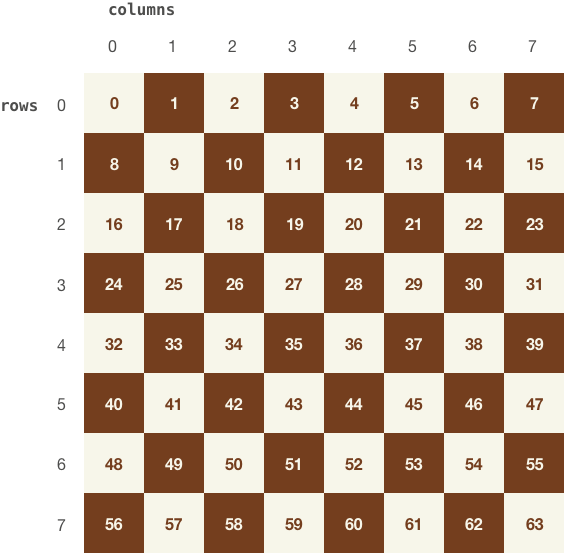Exercises 2
Create a package named exercises-2, delete its existing source file, and create a main.swift file. Put your solutions in this file, and when you’re done, compare your work with the solutions bundle.
These exercises no longer ask you to declare specific constants or variables. It’s up to you to choose an appropriate way to represent your input data, intermediate, and final results.
Exercise 2.1
This exercise uses the same chessboard as Exercise 1.6:

Given a position on this chessboard, expressed as a row and column number, calculate the next position on the chessboard, also expressed as a row and column number.
You can assume that the next position after 63 is 0 again.
Exercise 2.2
Given the coefficients,
Take into account the different number of solutions (0, 1, or 2), depending on the sign of
Exercise 2.3
Add parentheses to the following Boolean expression:
b1 && b2 || b1 && !b2 && b3Here, b1, b2, and b3 are variables of type Bool.
The parentheses should show the order in which the operators are applied and should not change the value of the expression. Verify this by printing both the original expression and the version with parentheses.
Tip
&& and || are left-associative.
Exercise 2.4
Given the current month and year, calculate the number of days in this month. Don’t forget about leap years.
Exercise 2.5
Given a number, determine if this number is a power of 2.
Exercise 2.6
Print a table of the first ten powers of 2. Calculate these powers without using a function.
Exercise 2.7
Given a positive number
Exercise 2.8
Given a positive number
Exercise 2.9
Given a number of pips between 2 and 12, calculate the odds of rolling this number of pips using two six-sided dice.
 Fundamentals
Fundamentals